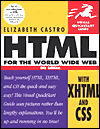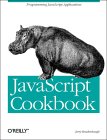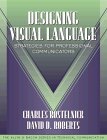Optional Textbooks
 |
Castro, Elizabeth. HTML for the World Wide Web with XHTML and CSS. 5th ed. Berkeley: Peachpit Press, 2002.
This is a good additional book for "visual learners" who might like more screenshots and such to help understand how different programming techniques affect a webpage. |
 |
Niederst, Jennifer. Web Design in a Nutshell: A Desktop Quick Reference. Cambridge: O'Reilly, 1999.
This is a good additional book for those of you who may like to know more about the entire internet process: dynamic document design (how the document changes with different browsers, monitors, etc.), HTML coding, including multimedia in a website, and creating website identity through design and Cascading Style Sheets. |
 |
Meyer, Eric A. Cascading Style Sheets: The Definitive Guide. 1st ed. Upper Cambridge: O'Reilly and Associates, 2000.
I'll be giving you a basic handout that discusses stylesheets, but there will be so much more to stylesheets than the handout can possibly provide. You may want to buy the book if you're really interested in web programming. |
 |
Flanagan, David. JavaScript: The Definitive Guide. 3rd ed. Upper Cambridge: O'Reilly and Associates, 1998.
We'll only be learning a small bit of JavaScript in class, aside from individual tricks and hints I may provide on workshop days. This is a really good resource, but somewhat for the "technically-minded" audience. |
 |
Bradenbaugh, Jerry. JavaScript Application Cookbook. Upper Cambridge: O'Reilly and Associates, 1999.
Once you've gotten a basic understanding of JavaScript, you can create mini "programs" that you can run on your website that could search the web, present a slideshow, keep user preferences using "Cookies," etc. |
 |
Turner, E. Shane & Karl Barksdale. HTML & JavaScript Programming Concepts. Cincinnati: South-Western Educational Publishing, 1999.
Once you've gotten a basic understanding of JavaScript, you can create mini "programs" that you can run on your website that could search the web, present a slideshow, keep user preferences using "Cookies," etc. |
 |
Kostelnick, Charles and David D. Roberts. Designing Visual Language. Boston: Allyn & Bacon, 1998.
If you're looking for some help with basics of visual design, this book does a good job of explaining visual rhetoric concepts and provides lots of examples. |
|